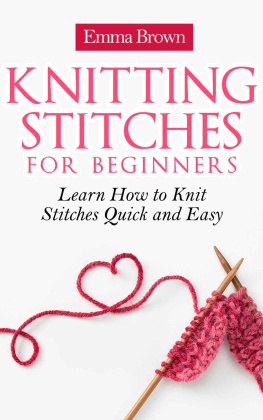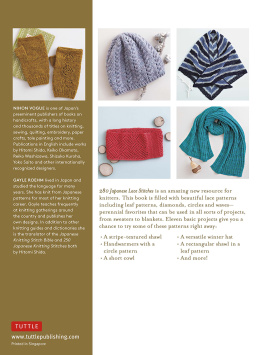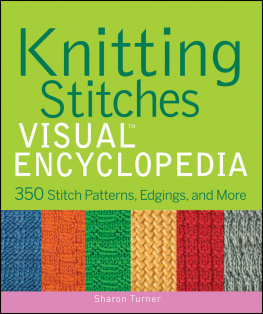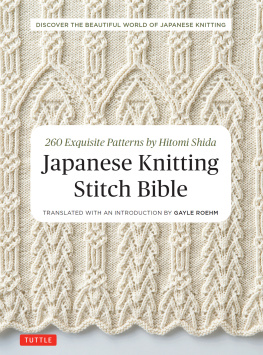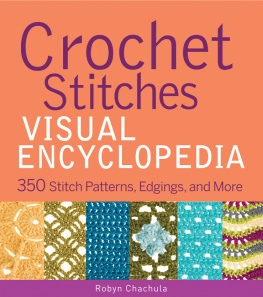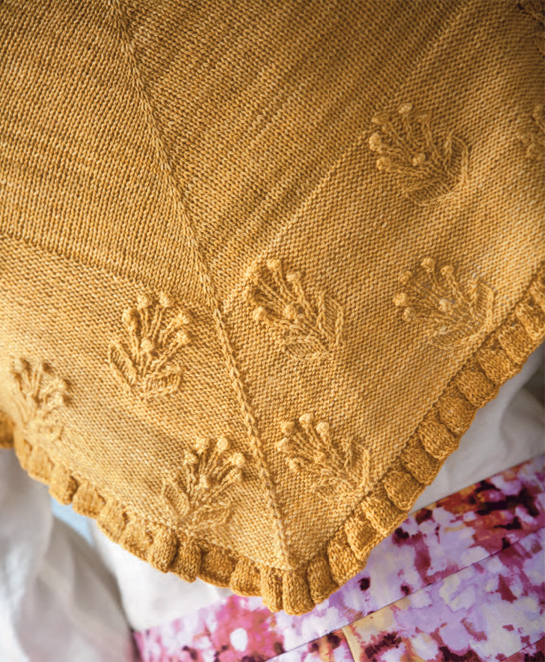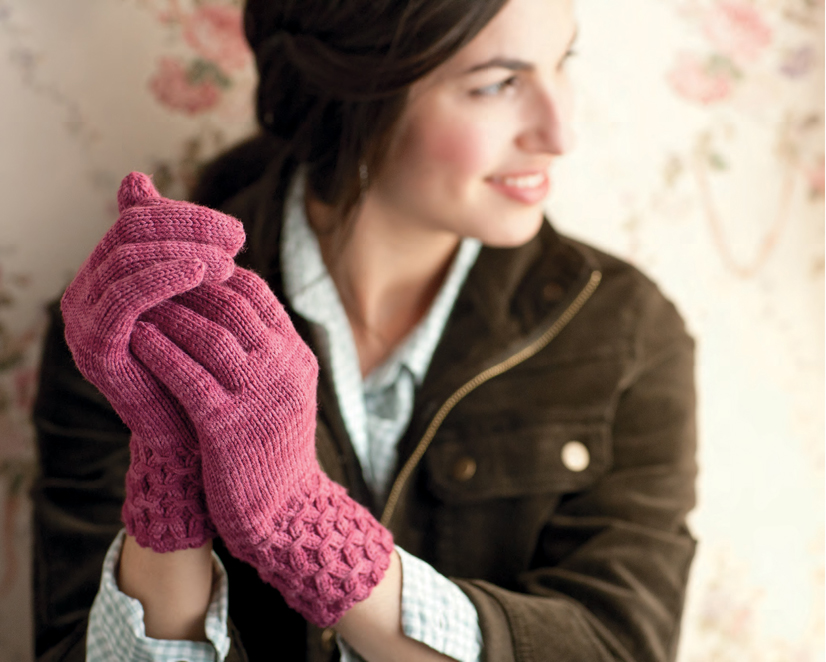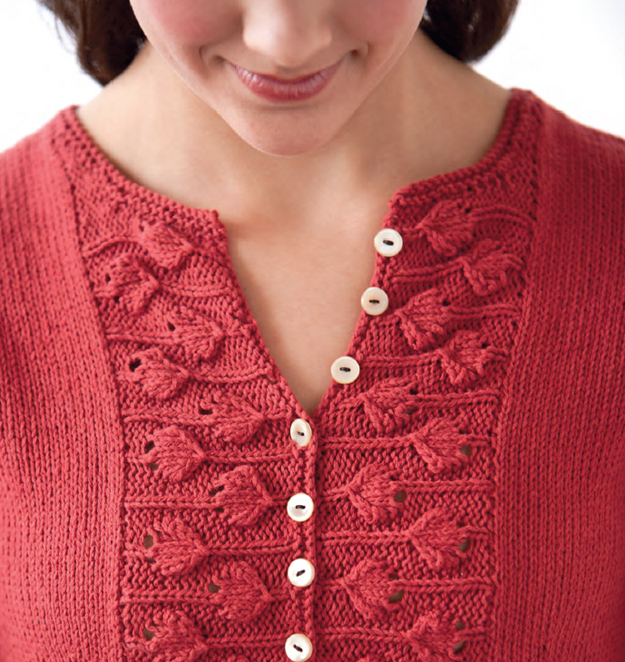Textured
Stitches
KNITTED
SWEATERS
& ACCESSORIES
with
smart details
Connie Chang Chinchio

| EDITOR | Ann Budd |
| TECHNICAL EDITOR | Lori Gayle |
| ART DIRECTOR | Liz Quan |
| COVER AND INTERIOR DESIGN | Julia Boyles |
| PHOTOGRAPHY | Joe Hancock |
| WARDROBE, HAIR, AND MAKEUP | Jessica Shinyeda |
| ILLUSTRATIONS | Gayle Ford |
| PRODUCTION | Katherine Jackson |
2011 Connie Chang Chinchio
Illustration 2011 Interweave Press LLC
Photography 2011 Joe Hancock
All rights reserved.
 | Interweave Press LLC
201 East Fourth Street
Loveland, CO 80537-5655 USA
Interweave.com |
Library of Congress
Cataloging-in-Publication Data
Chinchio, Connie Chang.
Textured stitches: knitted sweaters and accessories with smart details / Connie Chang Chinchio.
p. cm.
Includes index.
ISBN 978-1-59668-316-7 (pbk.)
ISBN 978-1-59668-967-1 (PDF)
ISBN 978-1-62033-169-9 (ePub)
1. Knitting--Patterns. I. Title.
TT825.C394 2011
746.432041--dc23
2011017159
Acknowledgments
The process of writing a book with twenty designs is a huge undertaking for someone used to churning out one design at a time, and I am extremely grateful for the help and support I received along the way. Foremost, Id like to thank my wonderful sample knittersAlyssa Kabel, Angela Hahn, Cecily Glowik MacDonald, Elspeth Kurth, Melissa Wehrle, and Virginia Lawther. In particular, Angela, Cecily, and Melissa set aside time from their own hectic design schedules to help out a friend, and for that I am indebted to them. Their eagle eyes and vast experience caught many a bug in the instructions before a single stitch was even cast on: their generosity and talent spoiled me.
Id also like to thank my infinitely patient editors, Anne Merrow, who started this journey with me, and Ann Budd, who helped me complete it. They were always available to lend a critical eye and words of encouragement when my energy flagged. Thanks also go to my technical editor, Lori Gayle, who worked quickly, efficiently, and accurately. Id also like to thank Joe Hancock for his stunning photographs, Julia Boyles for the beautiful design of the book, and Liz Quan for overseeing it all.
Finally, Id like to thank my familyMaurizio and Oliviawithout whom none of this would have any meaning. Maurizio is the best sort of fiber husbandpatient, kind, encouragingthough very eager to reclaim his home after nearly a year buried under yarn and sketches for this book. Our daughter, Olivia, and this book gestated at the same timeI discovered that I was pregnant right after the project list was finalized. And so it is to her that I dedicate this book. I hope to share my love of knitting with her and dare to dream that someday she may even knit some of these designs.
Contents
When I was seven , my grandmother introduced me to knitting in a desperate attempt to keep an overly talkative and inquisitive child quiet. Fascinated by the fabric that grew out of manipulating a series of loops and string on two needles, I found myself irrevocably addicted. In those first months, I patiently made an endless series of blankets and scarves out of mammoth skeins of multicolored yarn I found buried in the craft bins at the local Woolworths. Eventually bored with what I thought were the limits of my knitting abilities, I set it aside for many long years.
It wasnt until my second year of graduate school that, gripped by the desire to craft something handmade and personal for my then-boyfriend/now-husband, I picked up needles again. I was living in Ithaca, New York, at the timea small town that prides itself on handicrafts and natural materials, as well as two yarn shops. My first forays into those yarn shops introduced me to the dizzying possibilities of yarn and fiber. Colors and plies and compositionthere were countless variations to satisfy any appetite. Although I was drawn mostly to natural fine-gauged fibers with a tight twistyarns that I found to be durable, versatile, and easy to wearmy head could be easily turned by a soft hand-dyed, single-ply beauty. After a few unfortunate missteps, I eventually learned which yarns were appropriate for which situations (100% angora, for example, made a very poor pair of socks).
There were other valuable lessons I learned during my first years of truly obsessive knitting. I learned that I preferred to buy yarn locally where I could touch, see, and yes, even smell yarn before I made a commitment. I found that colors that appeared so entrancing on my computer monitor might be muddier, pinker, darker, or lighter when viewed in person. I learned that circular needles put less strain on my arms than straight needles and that the magic-loop method of knitting meant that longer circular needles were more versatile than shorter ones. Most importantly, I learned that I didnt have to follow a pattern to the letter, that I could adjust certain elements to fit my particular shape.
My first love was, and still is, stockinette stitch, that perfect companion to the classic, unfussy sweaters that I adore; sweaters that are equally at home in the office or on an evening out. But it wasnt long before I discovered that the judicious addition of texture patternsachieved by the simple combination of knit-and-purl-stitch building blocks, sometimes incorporating a few artfully placed yarnover increases and directional decreasescould make a garment truly special. And I learned that texture stitches could also be used to help shape a garmenta tight cabled pattern could cinch in a waist: a lacy pattern could add width and movement to a hem.
This book includes some of my explorations of ways in which textured stitch patterns can add aesthetics and structure in knitted garments. For variety, Ive included small, simple accessories such as headbands, gloves, and hats that can be whipped out in an afternoon or two, despite my predilection for fine yarns, as well as full-size garments such as pullovers, cardigans, hoodies, and Henleys that require more commitment, but whose results I hope youll find well worth the extra time. Let Textured Stitches inspire you to play with texture the next time you pick up your needles.
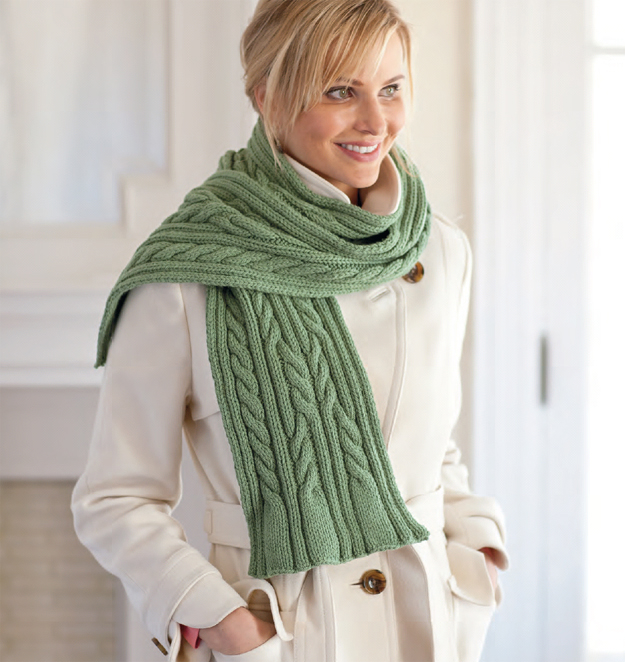
I love the look of thick cabled scarves especially when theyre generous enough to wrap several times around my neck. For scarves, its important to choose a yarn thats soft enough to wear against the skin and hardy enough for everyday use. Both soft and lofty, Quince and Companys Osprey is ideal for this densely cabled scarf. Interlocking cables meander along the length, but the stitch pattern is actually quite easy to memorize. After several repeats, youll find yourself putting away the chart and simply reading the stitches as you go.


